Alfa rides new Tonale into expanded U.S. presence
Filed under: Weekly test drives, Autos
By John Gilbert
If you’re old enough, you might remember the 1967 movie “The Graduate,” in which a college-aged Dustin Hoffman, Anne Bancroft and the beautiful Katherine Ross became huge stars. But they had to share star billing with a captive 1996 Alfa Romeo Duetto Spider, the 2-seat roadster that carried Benjamin on his assorted escapades.
We all could identify with somebody in that classic coming-of-age movie, and we all were unanimous in wanting an Alfa Romeo.
There is a touch of magic that penetrates your soul when you drive an Alfa, although the Italian company never made it big in the U.S. except in the dreams of anybody who appreciates a fine precision driving machine that practically anticipates your driving impulses. That feeling came back in spades when Alfa created the Giulia sedan and, as a part of owner Fiat just after Chrysler Corporation joined it as a sibling, many new American drivers got a taste of that magic. Same with the following Stelvio, a midsize SUV that handled like a Giulia, which handles like a sports car.
But the overriding concern is that the sensational feeling of driving an Alfa might be offset by the reputation — accurately gained, we must add — of unreliability, when compared to the top German sports sedans.
For 2024, however, there has been an enormous changeover at Alfa Romeo, which now is under the Stellantis banner of ownership — as is Ferrari, Chrysler, Dodge, Ram, Jeep, Fiat, Maserati, Aston Martin, and Alfa Romeo. Under that umbrella, the Tonale is being introduced into the U.S., but not just with the usual new-car hope. Stellanis has pushed Alfa to improve the breed and make the Tonale a model that can come to the U.S. and make serious inroads into the American market.
Almost subtly, Alfa has risen in the JD Power new-car satisfaction and initial quality ratings that are the most trusted in the industry. When I learned that Alfa had risen to the top echelon in those two classifications — ahead of BMW, Mercedes and Audi — it was startling. If Alfa is more dependable and trustworthy than those three stellar marques, that is a dazzling hat trick. With that in its resume, we learn that Stellantis is directing Alfa to send enough Tonales to the U.S. to erase all those old barriers that prevented U.S. consumers from seeking out Alfa vehicles.
What has not been erased from Alfa’s resume is that magical driving experience. I was able to spend a week with a 2024 Tonale up and down the hills of Duluth, up and down the highways up the North Shore of Lake Superior. The steering and precise handling immediately conjured up reflections of the Giulia, which I found to be one of the best-handling sedans every built, right up there with the top BMW sports sedans.
And the luxury touches in the interior add to the image, while the technology is simply off the top of the charts. In this era of moving toward electrification, the Giulia makes a valid statement of taking hybrid technology to new levels of economy and performance, over and above normal gas-engined cars and without any of the range-anxiety that gives pause to car-buyers to adopt all-out electric vehicles.
When I first did a brief drive in various new models at the Midwest Auto Media Association’s spring rally at Road America, I was impressed with both Alfas I drove, but I was unaware of the intricacies of the engineering technology under the hood.
It starts with a surprisingly sprightly 1.3-liter 4-cylinder gas engine, turbocharged, and adds a 15.5 kilowatt-hour battery to power a 90 kilowatt electric motor. Altogether, the system produces 272 horsepower, running through all-wheel drive via a 6-speed automatic. There are various buttons and controls you can activate to stress regenerative braking power back to the battery-pack or to push the gas-engine power, or the joint power of the plug-in hybrid.
The base model is certainly no slouch, with a 2.0-liter 4-cylinder turbo engine and a 9-speed automatic with all-wheel drive, but its more-than-adequate power is left behind by the hybrid powertrain. The battery pack, incidentally, is an advanced-tech unit produced in China, which means its internationally flavored production is 56 percent from Italy (it’s assembled in Pamigliano, Italy), with the transmission from Japan, and the final 12 percent of Chinese origin. We in the U.S. are concerned about falling behind China’s onrushing advantages in battery and EV technology, but Italy is not suffering from the same reluctance.
A subtle little driving advantage is that the steering-wheel shift paddles, normally affixed to the steering wheel’s right and left edges, are tall alloy bars that are affixed to the steering column, instead, so in spirited driving, if you swerve around a sharp corner, you needn’t grope for where on the turned steering while to find those paddles — they’re where they always should be.
On the console and dash, you find different controls. One offers a tightening of the steering and suspension whether you select sport, eco or comfort, and another for whether you want to stress gas, hybrid or EV power. Similarly, you can change the entire format of the instruments, going digital or analog, or giving you speed in a large digital number and other information easily set. I personally prefer the familiar round analog tach and speedometer, with other pertinent information between them.
For all the technology loaded into the Tonale, I was surprised to learn that the vehicle could be obtained for about $45,000, although adding the $1,500 19-inch alloy wheels, a $1,200 full electric moonroof, a $3,000, a $2,000 premium sound package, and a $2,000 advanced active-assist package with various safety alerts and lane-changing devices boosted the test car’s sticker to $55,950.
Still, if JD Power is right, and the Tonale TI e is now higher rated than BMW, Mercedes, Audi and nearly all other worldwide vehicles in initial quality and satisfaction, plus you get high-tech power and fuel economy, and that legendary Alfa handling magic, well, the price is a bargain.
Mainstream Outlander moves upstream
Filed under: Weekly test drives, Autos
By John Gilbert
At a glance, the 2023 Mitsubishi Outlander Ralliart SE is a surprise to your senses. At first, from the front, its uniquely-sculptured hood and fenders encircle the headlight enclosures and make it look a little like a bug-eyed monster with too much mascara.
But don’t worry about the frontal appearance — it grows on you. Even in as short a time as one week, which matches the test-drive span I drove the vehicle, you reach the point where it doesn’t bother y9u anymore, and then you actually start to like it.
Mitsubishi has always been full of surprises in the 50 years it’s been bringing vehicles from Japan into the U.S. for sale, and in retrospect it seems a shame that the company didn’t come in by itself at the same time Honda, Toyota, Nissan, Mazda and Subaru were breaking into the U.S. market. Instead, Mitsubishi hooked up with Chrysler Corporation and in truth pretty much saved Dodge, Plymouth and Chrysler from major struggles.
Slow-learning consumers might have scorned those first Japanese imports, and Chrysler fans might have joined them saying the Dodge Colt subcompact was better than those Japanese competitors, but of course, the Colt was built by Mitsubishi, as was the Plymouth Champ. The Colt also came in a station wagon, and when Japanese competitors discovered the versatility and popularity of minivans, Chrysler held all the aces with the Dodge Caravan and later the Plymouth Voyager and Chrysler Town & Country. Those were company-saving vehicles, but a lot of folks didn’t realize that the main reason for their incredible durability was their amazingly smooth-running 3.0 V6 — built by Mitsubishi.
We could go on, into fun cars like the Eagle Talon and Plymouth Laser versions of Mitsubishi’s Eclipse sporty coupe, or the fantastic Dodge Stealth twin of the Mitsubishi 400 GT. But anyway, Mitsubishi never gained the same popularity or fame it might have had on its own, similar to its elite stature with its MGA television and electronics.
That was all back 50 years or so, while the biggest surprise of the last decade is that Mitsubishi is still hanging in there, building innovative vehicles and engines and fighting a truly uphill battle against the rising tide of technology all over the world. But the Outlander is leading Mitsubishi back to SUV popularity. A dozen years ago, Mitsubishi joined Chrysler for a joint venture with Hyundai, and the South Korean upstart began making a superb 2.4-liter engine that all three companies used — and still use.
A year ago, Mitsubishi restructured the Outlander, putting it on a new platform that is the result of another join engineering venture with Nissan and Renault. It was a brilliant move by Mitsubishi, which was adequate before, but now rides on the same platform as the hugely popular Nissan Rogue, and the new Outlander has a 33 percent improvement in torsional rigidity over its predecessor.
With all the right parts in place, the 2023 Outlander Ralliart SE underwent the refinement of a stunning interior, with impressive instrumentation and the luxury of quilted leather bucket seats, stitched to perfection and willing to house seven occupants in comfort and support, to celebrate the vehicle’s 40th anniversary. Well, for certain four or five of those seven will be comfortable; the third-row seat is mainly for youngsters and will spend most of its life probably folded down to increase storage space.
But at least there is a third row if needed.
Under the hood there is a refined version of that joint-venture 2.4-liter four-cylinder gas engine, and it is coupled to a hybrid system consisting of either of two battery arrangements, one with a single electric motor, or a two-motor deal with the two operating each rear wheel for a combined 248 horsepower instead of 132. The same set-up also boosts the torque figure up to 332 foot-pounds, above the standard 188.
The transmission gives you a “choice” between a CVT (continuously variable transmission) and an 8-speed — by giving you both. The CVT has detents built into its belt to simulate eight different gears, and you get steering wheel paddles to facilitate manual control of shifting.
You also can engage “One-pedal driving,” which uses the regenerative braking from the plug-in hybrid electric power to instantly help control your deceleration. So you can almost eliminate ever using the brake pedal, simply use the gas pedal to go and maintain speed, and when you see a stop ahead, you let off the gas and the Outlander slows down by itself, and will actually come to a compete stop, unless you feel the need to step on the brake to slow more quickly.
For a fully loaded price of about $50,000, the Outlander has about every contemporary feature you might want, and a few others don’t have. For example, the plug-in hybrid will accept a Level 3 high-speed charge station, something rare or not found in other three-row SUVs. You can avoid the plug-in and let the regenerative power do its thing alone, but using both can easily lift you up into the high-mileage elite.
Mitsubishi also puts its stamp on its unique all-wheel-drive system, calling it “S-AWC,” for “super all-wheel control,” using the gas engine for front-wheel power and the electric motors to help the rears keep up. It also enhances cornering, and gives the Outlander near sports-sedan agility.
Similarly, Mitsubishi rounds up all its impressive driving aids and puts them into “Mi-Pilot Assist,” which coordinates adaptive cruise control, lane keeping assist, forward collision warning and mitigation, blind spot warning, lane departure warning and prevention, and rear cross traffic alert. And you can stay in touch with everything the Outlander is doing because it has a 12.3 inch digital information screen.
With the battery electrical power fully charged, you can switch it to drive pure electric, or combine the gas-engine power with the electric motor power to zip onto freeways or into congested traffic. You can use pure electric for 34-40 miles of range, and you can bolster your mileage with judicious use of the traction settings. A knob gives you the choice of power, eco, normal, tarmac, gravel, snow, or mud, and you can easily reach 50 miles per gallon, and even reach 60 mpg.
And all of that while in comfort and health. The air conditioning includes an air purifier, which is the perfect thing in this summer of trying to breathe around the Canadian wildfire smoke wafting down into our airspace.



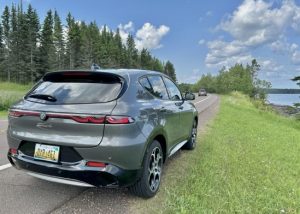
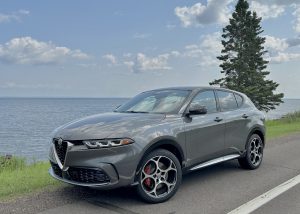

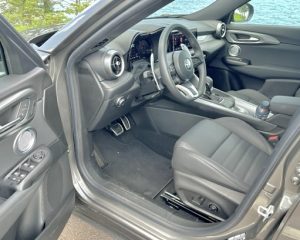

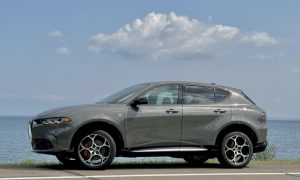

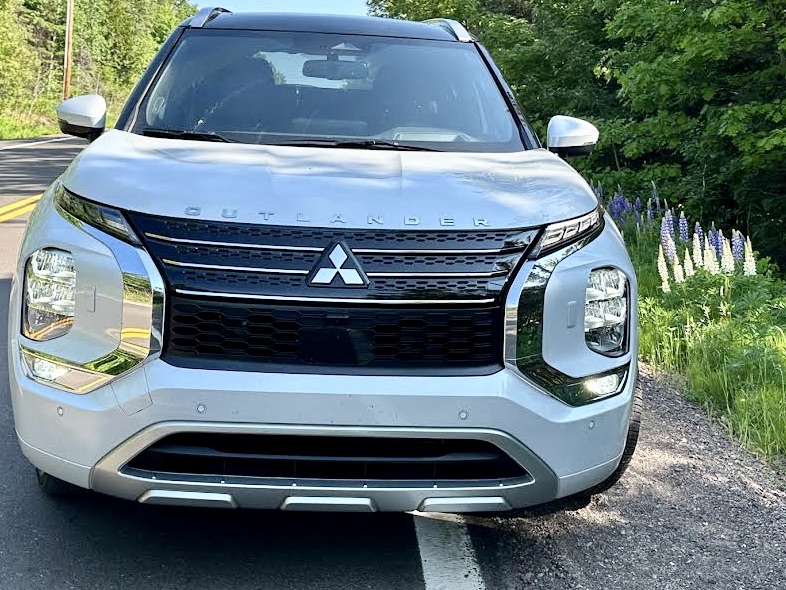
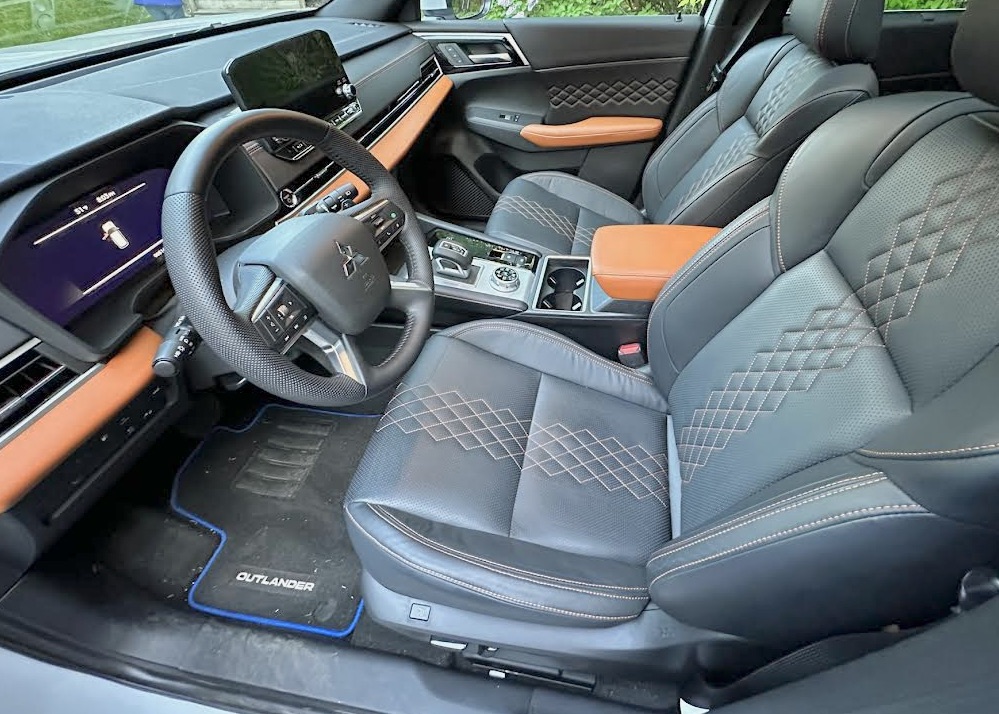
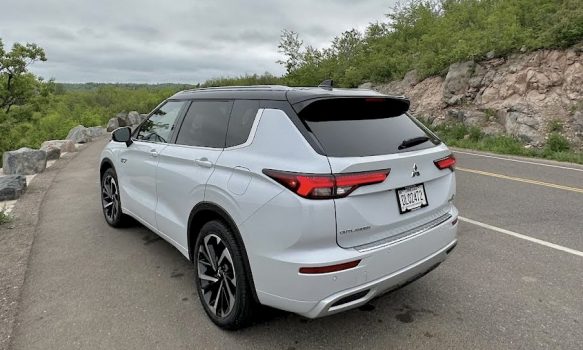
 John Gilbert is a lifetime Minnesotan and career journalist, specializing in cars and sports during and since spending 30 years at the Minneapolis Tribune, now the Star Tribune. More recently, he has continued translating the high-tech world of autos and sharing his passionate insights as a freelance writer/photographer/broadcaster. A member of the prestigious North American Car and Truck of the Year jury since 1993. John can be heard Monday-Friday from 9-11am on 610 KDAL(www.kdal610.com) on the "John Gilbert Show," and writes a column in the Duluth Reader.
John Gilbert is a lifetime Minnesotan and career journalist, specializing in cars and sports during and since spending 30 years at the Minneapolis Tribune, now the Star Tribune. More recently, he has continued translating the high-tech world of autos and sharing his passionate insights as a freelance writer/photographer/broadcaster. A member of the prestigious North American Car and Truck of the Year jury since 1993. John can be heard Monday-Friday from 9-11am on 610 KDAL(www.kdal610.com) on the "John Gilbert Show," and writes a column in the Duluth Reader.